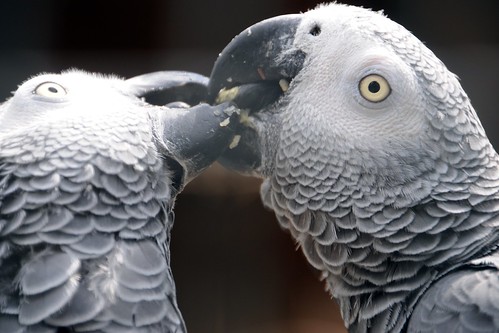 African grey parrots. Image by Joachim S. MüllerDurban - An investigation into the deaths of hundreds of African Grey parrots on a flight from Johannesburg to Durban on Christmas Eve points to possible carbon monoxide poisoning, as well as the possibility that they froze to death.
African grey parrots. Image by Joachim S. MüllerDurban - An investigation into the deaths of hundreds of African Grey parrots on a flight from Johannesburg to Durban on Christmas Eve points to possible carbon monoxide poisoning, as well as the possibility that they froze to death.
This is according to Dr Tertius Bergh, acting director of veterinary services, quarantine and public health in the Department of Agriculture.
The deaths of the parrots, which were caught in the Democratic Republic of Congo last year and imported for breeding purposes, caused shockwaves when the news broke last week.
According to Bergh, 749 African Greys were removed from the state's quarantine facility in Kempton Park on December 24.
Legal dispute
The parrots were shipped on a 1time flight to Durban, where they were to be held in a private quarantine station, because the state facility was to close from December 25 to February 1.
The birds were moved on instruction from Hendrik Matthews, a breeder from Rooodepoort, amidst a court battle with another bird breeder, Ben Moodie, regarding ownership of the parrots.
They were worth about R2m.
When the birds arrived at King Shaka airport in Durban, over 90% of them were dead. Of the remaining 71 birds, 13 died within the next few days, said Bergh.
The rest of the birds are doing well.
According to Bergh, the state vet and a bird expert performed post-mortems and tissue tests.
Air conditioning
No decisive conclusion was reached, but the "consensus clearly points to carbon monoxide poisoning or that they froze to death", Bergh said.
Anya Potgieter, 1time spokesperson, said on Thursday the air conditioning in the cargo hold was switched on.
"If it had been switched off, a little dog in the same cargo hold would also have frozen to death," she said.
Regarding the possibility of poisonous gas being to blame, she explained earlier that the air in the passenger cabin is circulated through the cargo hold and doesn't come into contact with poisonous gas.